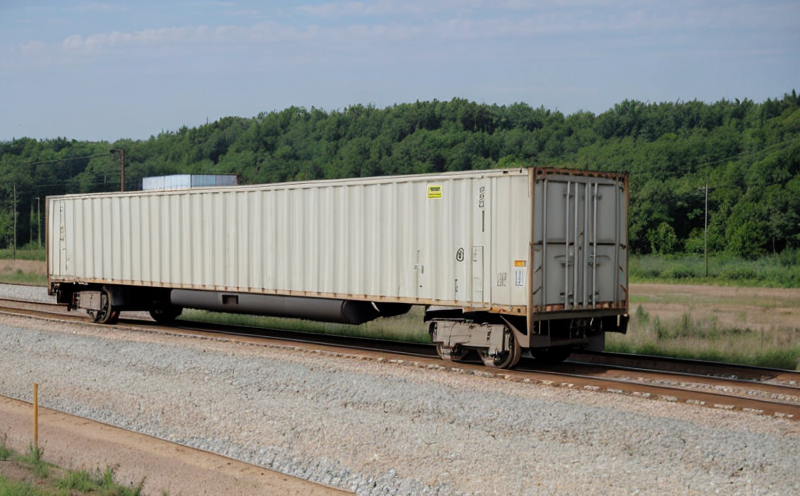EN 15227 Rollover Resistance Testing of Freight Wagons
The EN 15227 standard is a critical component in ensuring the safety and reliability of freight wagons used within the railway sector. This test evaluates the rollover resistance of freight wagons, which is essential for preventing derailments and ensuring safe transportation of goods across various terrains.
Under this standard, the objective is to assess how a wagon withstands lateral loads that could cause it to tip over or roll sideways. The test simulates real-world conditions such as uneven track surfaces, sudden braking, and high-speed cornering. By conducting this test, railway operators can ensure their wagons meet the necessary safety standards before being deployed in service.
The testing procedure involves subjecting a fully loaded wagon to controlled lateral forces using specialized equipment designed to mimic actual operational conditions. The results provide insights into the structural integrity and stability of the wagon under stress, helping manufacturers identify potential weaknesses and areas for improvement.
| Application | Description |
|---|---|
| Railway Infrastructure Testing | Ensures that freight wagons can safely navigate through different types of tracks and curves. |
| New Product Development | Assists in the design phase to ensure new wagon models meet safety standards before production. |
| Quality Assurance | Aids quality control teams in verifying that existing wagons comply with relevant regulations and industry best practices. |
The testing process is meticulously controlled, using sophisticated instrumentation to measure the forces applied during lateral loading. Specimens are prepared by ensuring they are loaded according to standard guidelines provided in EN 15227, which includes placing appropriate weights on the wagon's axles.
- Load application must be gradual to simulate real-world scenarios accurately.
- The test setup should replicate conditions that could potentially cause a rollover event.
Upon completion of the testing, detailed reports are generated, highlighting key findings and recommendations for improvement. These reports serve as valuable references for both regulatory bodies and internal stakeholders to ensure ongoing compliance with international standards.
Why It Matters
The safety of freight wagons is paramount in the railway industry, directly impacting public confidence and operational efficiency. Ensuring that wagons can resist rollover under various conditions minimizes risks associated with derailments or overturns.
Rollover resistance testing helps prevent accidents by identifying potential structural issues early in the design process. This proactive approach not only enhances safety but also reduces maintenance costs and downtime for railways. Additionally, compliance with standards like EN 15227 demonstrates a commitment to maintaining high-quality infrastructure, which is crucial for attracting investment and fostering trust among stakeholders.
By adhering to such rigorous testing protocols, railway operators can ensure that their wagons perform reliably under challenging conditions, ultimately contributing to safer transportation of goods across diverse terrains. This aligns with broader goals of sustainable development within the sector.
Industry Applications
- Railway Infrastructure Testing: Ensures that freight wagons can safely navigate through different types of tracks and curves.
- New Product Development: Assists in the design phase to ensure new wagon models meet safety standards before production.
- Quality Assurance: Aids quality control teams in verifying that existing wagons comply with relevant regulations and industry best practices.
International Acceptance and Recognition
The EN 15227 standard enjoys widespread acceptance across the European Union and beyond, reflecting its significance in ensuring safety and reliability within the railway sector. This standard is recognized by major international bodies such as ISO, ASTM, and EN, further emphasizing its relevance globally.
- European Railway Agency (ERA) Compliance:
- Eurotrug Certification Requirements:
The use of this standard is mandatory for railway operators in several countries within the EU. Additionally, many non-EU railways also adopt it due to its stringent requirements and emphasis on safety.





